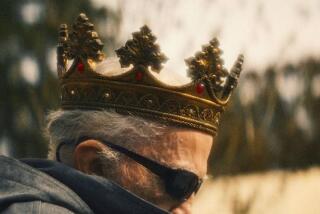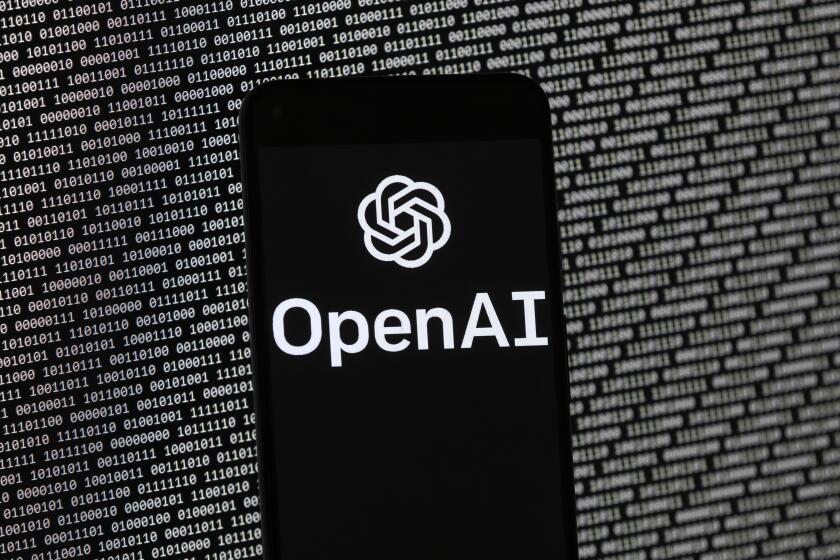Western Computer Faire Grows Up
- Share via
I go to a lot of computer shows and most the time they’re pretty boring. Usually they consist of row after row of slick booths staffed by marketing and sales representatives who may know enough to sell their products but may not know enough to answer technical questions. About the only exciting moment is the final one when an announcement comes over the loud speaker proclaiming the show over. That’s generally greeted with a loud cheer of relief.
It hasn’t always been that way. Such shows were once dominated by hobbyists, entrepreneurs, programmers and others who loved computing and really cared about their products and the industry as a whole.
One of the first and longest-running computer shows is the West Coast Computer Faire, held each year in San Francisco. The first one took place in 1977, shortly after the advent of the microcomputer. According to legend, one exhibitor at the first show had trouble coming up with the cash to decorate its booth. The two young men who ran the company reportedly offered stock in exchange for the decorations. The decorator, had he accepted Steve Jobs’ and Steve Wozniak’s offer, would now own part of Apple Computer Inc.
Like Apple, the Faire has survived and thrived. The show is about to have its 10th run (there were two shows one year) March 30 to April 2 at San Francisco’s Moscone Center.
Owner Used RollerSkates
The Faire has changed. In the old days, it was held in the caverns of San Francisco’s ancient Brooks Hall. The floors were kept uncarpeted, allowing the Faire’s jeans-clad owner, Jim Warren, to move about the aisles on roller skates. Warren blended with his environment. A well-appointed booth might have had a card table, a couple of chairs, some miscellaneous computers, circuit boards, software packages and maybe some draperies for decoration.
The Faire is now carpeted, and Jim Warren is no longer the owner. Warren sold the Faire, in 1983, to Prentice-Hall, the Englewood Cliffs, N.J.-based publishing company. Last December, Prentice-Hall was acquired by Gulf & Western.
Today, you’re likely to see professionally designed booths costing tens of thousands of dollars. Some may even have two-story structures, complete with conference rooms, telephones and the ambiance of a showroom. “It’s not outlandish,” according to Computer Faire President David Sudkin, “for the construction costs on the more elaborate booths to be upwards of $150,000.” Booths are generally carted from show to show.
Exhibitors pay $14 per square foot plus the cost of building and installing the booth. Some companies will rent a 36-square-foot booth for $504 while others, like IBM and Apple, will take as much as 3,000 square feet.
Now Oriented Toward Marketplace
The changes in the Faire have been gradual, having more to do with the maturation of the industry than the Faire’s new owners. No longer dominated by hobbyists and technical people, the Faire and the industry it reflects are now oriented toward the corporate marketplace.
The changes aren’t necessarily bad. Along with the slick brochures and salespeople has come a commitment to making computers easier to use and understand. That opens the doors to new users, more concerned with productivity than with the latest chip or programming language.
You’ll still find plenty of “techies” among the anticipated 40,000 attendees. You’ll also find corporate executives, data-processing managers, homemakers, politicians, TV news crews and just about anyone else. The Faire is open to the general public.
Some traditions do continue. There are, according to Sudkin, a substantial number of small start-up companies that exhibit at the Faire. “If you take the time to really go through our show, those entrepreneurial companies are very much in evidence,” Sudkin says. In addition, the Faire provides a limited amount of free space for nonprofit organizations such as computer users’ groups. Sudkin expects about 300 exhibitors this year.
Very Substantial Discounts
My favorite tradition is the opportunity to pick up bargains. Amid the slick exhibits are some schlocky booths where you can buy anything from brand-name hardware and software to miscellaneous components--all at a very substantial discount. Bring your checkbook or major credit card.
The Faire’s program provides the opportunity to listen to and question industry insiders on the latest trends and products. Most sessions are included with the Faire’s admission price. Tickets are $15 with pre-registration or $20 at the door.
On the first day of this year’s show, there will be a panel of computer pioneers who were around 10 years ago when the microcomputer came on the scene. Panelists will include Gordon Eubanks, author of C-BASIC; Adam Osborne, founder of Osborne-McGraw Hill book company and Osborne Computer Corp.; Lee Felsenstein, designer of the Osborne 1 portable computer; Computer Faire founder Jim Warren, and Gary Kildall, author of the CP/M operating system. Although none of these people are household names, they’re all important historical figures. Maybe they should call the panel “Gathering of the Gurus.”
The Faire’s main office is 611 Veterans Blvd., Redwood City, CA 94063. If you have a modem connected to your computer, you can register “on-line” by having your computer dial (415) 548-5751.
The Computer File welcomes readers’ comments but regrets that the authors cannot respond individually to letters. Write to Lawrence J. Magid, 4 Embarcadero Center, Suite 1970, San Francisco, CA 94111.






